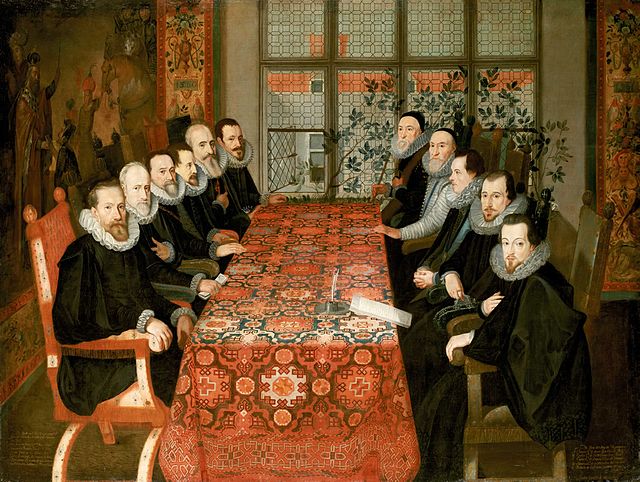Foreign relations of Spain
The foreign relations of Spain could be constructed upon the foreign relations of the Hispanic Crown. The personal union of Castile and Aragon that ensued with the joint rule of the Catholic Monarchs was followed by the annexation of the Kingdom of Granada and the Kingdom of Navarre. The crown also built a large colonial empire in the Americas after the arrival of Columbus to the New World in 1492.
Dominions of the Habsburgs in 1556
The Somerset House Conference between English and Spanish diplomats that brought an end to the Anglo–Spanish War (1585–1604).
Aerial view showing the Rock of Gibraltar, the isthmus of Gibraltar and the Bay of Gibraltar
France–Spain relations are bilateral relations between France and Spain, in which both share a long border across the Pyrenees, other than one point which is cut off by Andorra. As two of the most powerful kingdoms of the early modern era, France and Spain fought a 24-year war until the signing of the Treaty of the Pyrenees in 1659. The treaty was signed on Pheasant Island between the two nations, which has since been a condominium, changing its allegiances each six months.
Louis XIV of France and Philip IV of Spain signing the Treaty of the Pyrenees in 1659, ending the 24-year Franco-Spanish War.
Francisco Goya painting, The Third of May 1808 (1814), depicting French soldiers executing civilians defending Madrid.
Spanish Prime Minister Pedro Sánchez and French President Emmanuel Macron meeting at the Moncloa Palace in Madrid; on 26 July 2018.
Embassy of France in Madrid







